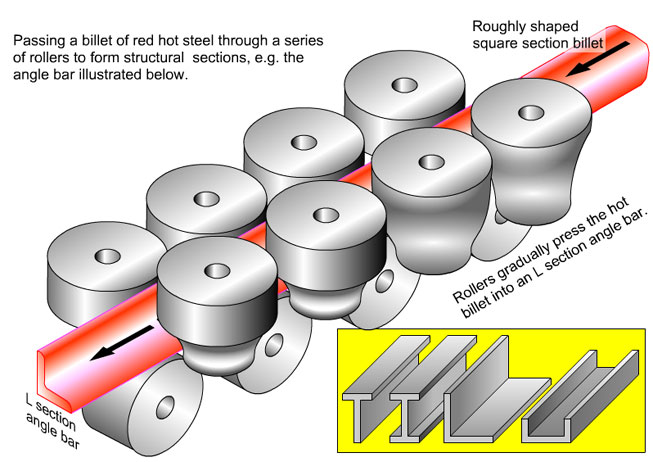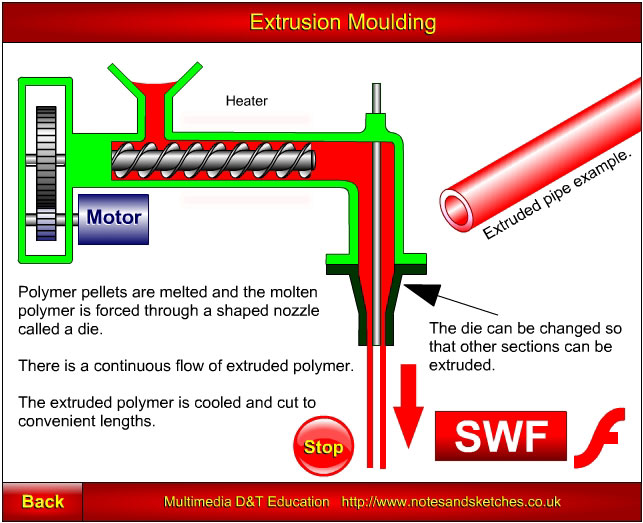 Click on the screenshot above to view the "Structural Sections" animation by Laszlo Lipot |
|
|
|
Thin flat sheet materials tend to flex and bend easily under load. For this reason materials are formed into shapes that resist bending. The cross section of materials that resist bending are L, T, C, O and similar shapes. These are called structural sections. Structural sections resist bending forces. Structural sections are made in a variety of materials including metals, (e.g. steel, aluminium, brass) various polymers, polymer composites, concrete and timber, although timber beams are usually rectangular sections, e.g. 200 x 50 cross section. Metal structural sectionsMetals are formed into structural sections by forcing red hot billets (red hot roughly shaped metal bars) through rollers that form the billets into the desired section. Each pair of rollers squeezes the billet a little more than the previous pair until the final pair of rollers produces the desired cross section of metal.
Plastic structural sectionsPlastic structural sections are commonly made by extrusion moulding and filament winding. Extrusion mouldingExtrusion moulding is a continuous process that involves forcing heated and softened plastic through a shaped former called a die. The extruded plastic is cooled and cut into convenient lengths.
Filament windingFilament winding involves winding resin covered polymer fibres around a mandrel and allowing the resin to cure, thus forming a rigid thermoset plastic tube.
|
|
 |


